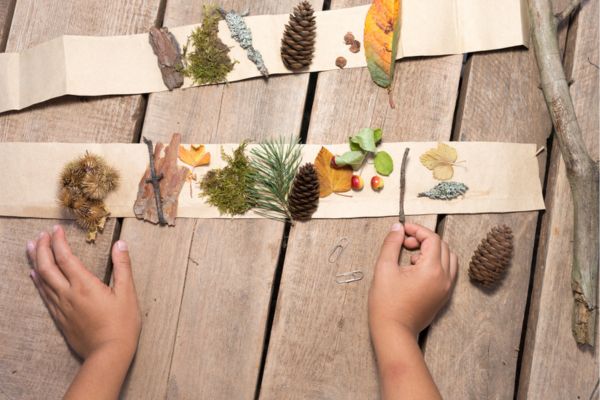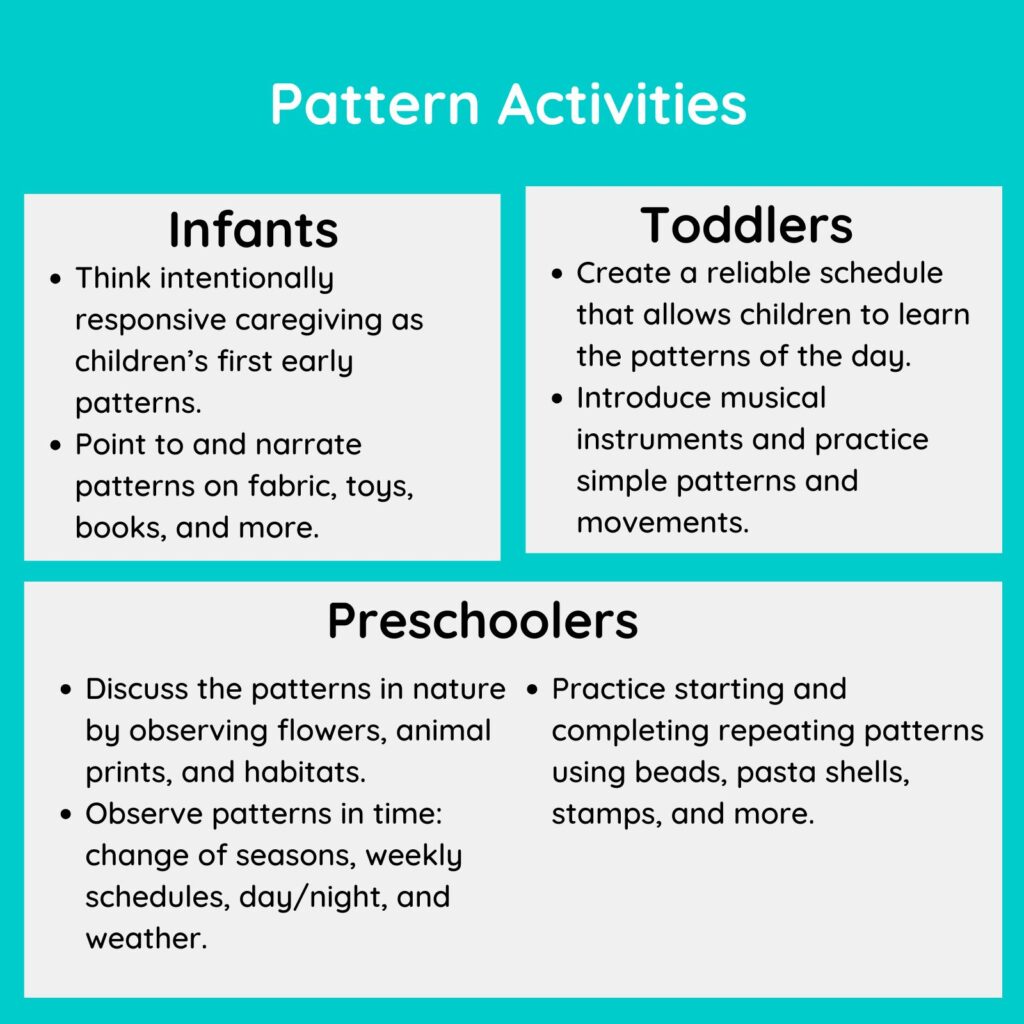
Understanding patterns is an early math skill that allows children to make predictions and understand what will logically come next. This is important later in school when learning arithmetic and even later in life with algebra and other complex skills that require pattern recognition.
Patterns are all around us. For example, let’s look to the patterns that we find in nature, as we observe the hexagons of a beehive, the intricate designs of a spiderweb, or the spots and stripes on the wings of a butterfly. These are visual patterns, but there are many types of patterns. For example, we might observe patterns in the weather or changes in the seasons, patterns in our daily routines, or patterns in our neighborhood as part of a community infrastructure. Understanding patterns is an important skill for future schooling as children will use patterns to make predictions, understand sequences, make connections, and learn about the world.
In the infant years, the most important patterns for young children are patterns of safety and healthy routines. For example, when they cry and receive love from a caring adult, it helps them to understand the connections between emotional reactions to responsive support. It is important for young children to have predictable routines as it allows children to understand what is expected of them at specific times of day, and they can feel secure in knowing when they will be fed, changed, bathed, dressed, and read to. In the toddler years, educators and caregivers can also introduce the topic of patterns through music and movement, as that is the most age-appropriate way to invite children’s participation. They can invite children to finish the lyrics of favorite songs, or to repeat patterns with homemade musical instructions from our 5 Senses theme, “Hearing: Rhythmic Instruments”. With simple homemade drums and shakers, children can participate in fun patterns that are fast and slow, loud and quiet, or that shake three times and then just once.
As children grow, we can continue to explore patterns as a part of everyday life. For example, we can practice simple sequences through our play, as we string “Nature Decorations” or make beautiful “Flower Petal Bracelets”, we can practice color patterns (yellow-green-yellow-green) or use other vocabulary (petal-stem-petal-stem). Or you can discuss the types of patterns we might see in nature, such as the markings of snakes in our “Snake Camouflage” activity, or the seasonal patterns that children may notice with the changing seasons. Patterns are all around us and invite us to look at the world with a special perspective, which is so much richer than a worksheet!
At Rayz Kidz, we’re here to support you, the make planning your week easy and your days joyful. To find activities that focus on opportunities for developing independence along with the other 29 important skills of early childhood development, explore the Rayz Kidz app and the Rayz Kidz curriculum.
